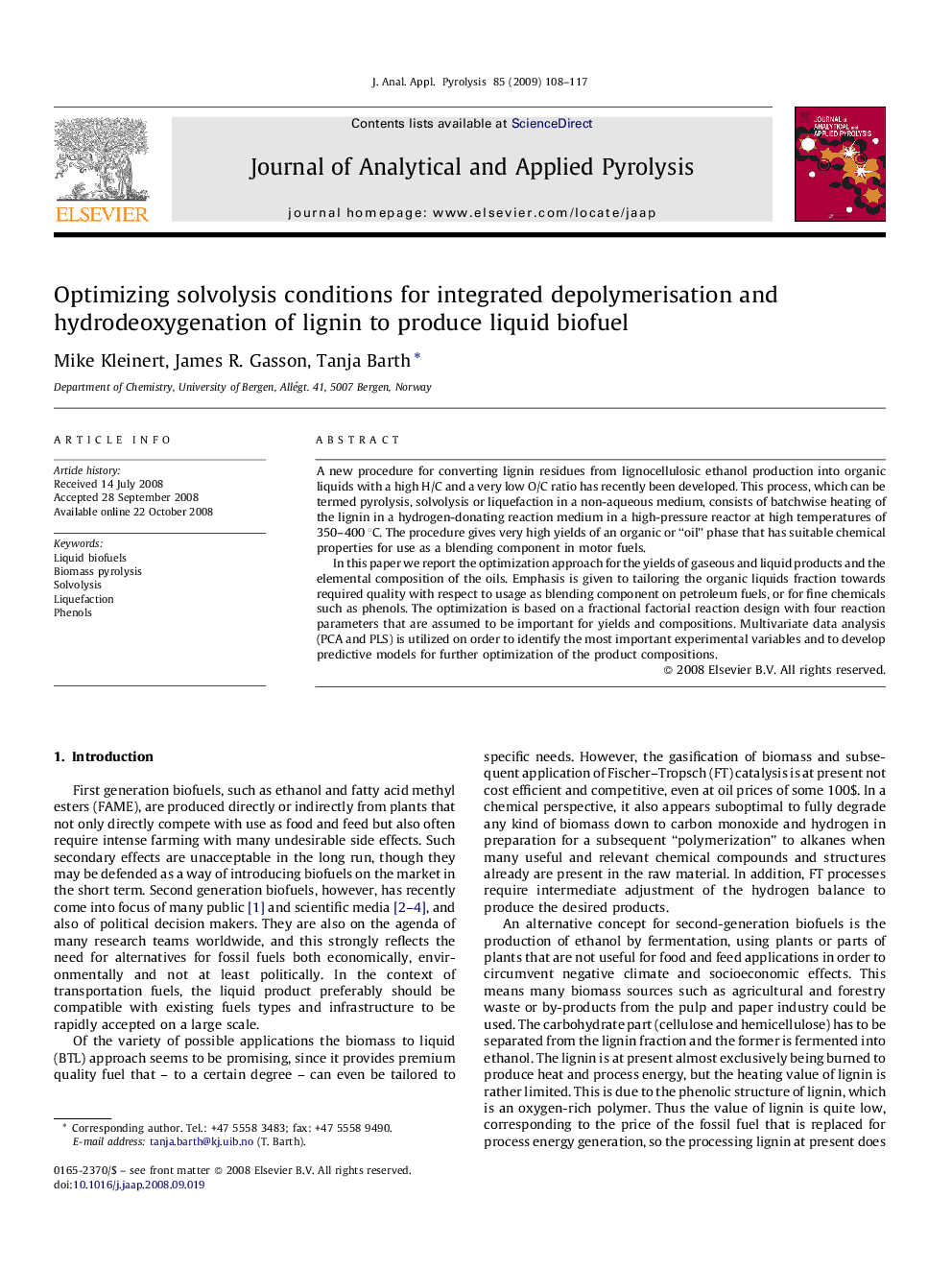| Article ID | Journal | Published Year | Pages | File Type |
|---|---|---|---|---|
| 1197500 | Journal of Analytical and Applied Pyrolysis | 2009 | 10 Pages |
A new procedure for converting lignin residues from lignocellulosic ethanol production into organic liquids with a high H/C and a very low O/C ratio has recently been developed. This process, which can be termed pyrolysis, solvolysis or liquefaction in a non-aqueous medium, consists of batchwise heating of the lignin in a hydrogen-donating reaction medium in a high-pressure reactor at high temperatures of 350–400 °C. The procedure gives very high yields of an organic or “oil” phase that has suitable chemical properties for use as a blending component in motor fuels.In this paper we report the optimization approach for the yields of gaseous and liquid products and the elemental composition of the oils. Emphasis is given to tailoring the organic liquids fraction towards required quality with respect to usage as blending component on petroleum fuels, or for fine chemicals such as phenols. The optimization is based on a fractional factorial reaction design with four reaction parameters that are assumed to be important for yields and compositions. Multivariate data analysis (PCA and PLS) is utilized on order to identify the most important experimental variables and to develop predictive models for further optimization of the product compositions.
